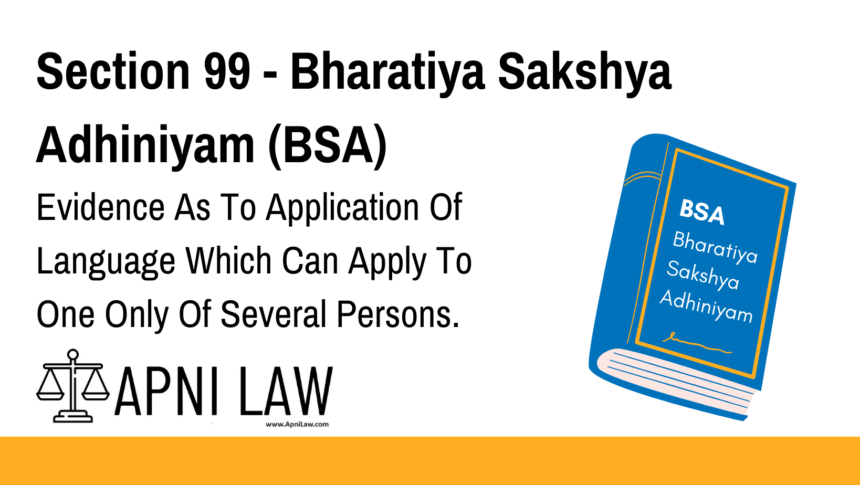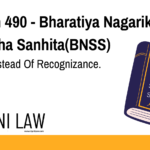Code
When the facts are such that the language used might have been meant to apply
to any one, and could not have been meant to apply to more than one, of several persons or
things, evidence may be given of facts which show which of those persons or things it was
intended to apply to.
Illustrations.
(a) A agrees to sell to B, for one thousand rupees, “my white horse”. A has two white
horses. Evidence may be given of facts which show which of them was meant.
(b) A agrees to accompany B to Ramgarh. Evidence may be given of facts showing
whether Ramgarh in Rajasthan or Ramgarh in Uttarakhand was meant.
Explanation
Section 99 of the Bharatiya Sakshya Adhiniyam deals with documents that use ambiguous references where the language could apply to more than one person or object. In such situations, courts are permitted to consider external evidence to identify the correct subject that was intended.
This provision is essential in cases where misinterpretation of general terms may result in disputes or incorrect assumptions.
Key Elements
-
Applies when the document’s language refers ambiguously to one among multiple people or things.
-
Allows parties to introduce contextual facts to determine the specific person or thing referred to.
-
Does not alter the document’s terms but clarifies its reference.
Illustration (Explanation)
-
If A has two white horses and agrees in writing to sell “my white horse” to B, it is unclear which one he meant. In such a case, evidence may be introduced to clarify which horse was the subject of the sale.
-
Similarly, if someone agrees to travel to “Ramgarh” and there are multiple locations with that name, evidence may be admitted to determine which specific Ramgarh was intended.
Common Questions and Answers
Q1. What kind of ambiguity does Section 99 address?
Section 99 addresses cases where the wording in a document could logically apply to more than one subject (person or object), but is only intended to apply to one of them.
Q2. Is oral evidence permitted under Section 99?
Yes. Oral and documentary evidence is allowed under this section to help clarify the intended subject when multiple interpretations exist.
Q3. Does Section 99 permit changing the meaning of a document?
No. Section 99 is limited to clarifying which of several possible subjects was referred to. It does not allow for contradiction or alteration of the document’s terms.
Conclusion
Section 99 ensures that ambiguous references in documents do not lead to legal confusion or misinterpretation. It empowers the courts to examine external facts and identify the true intention behind the words used, without modifying the terms of the document itself.
If you need this in HTML or want to proceed with another section, let me know!









